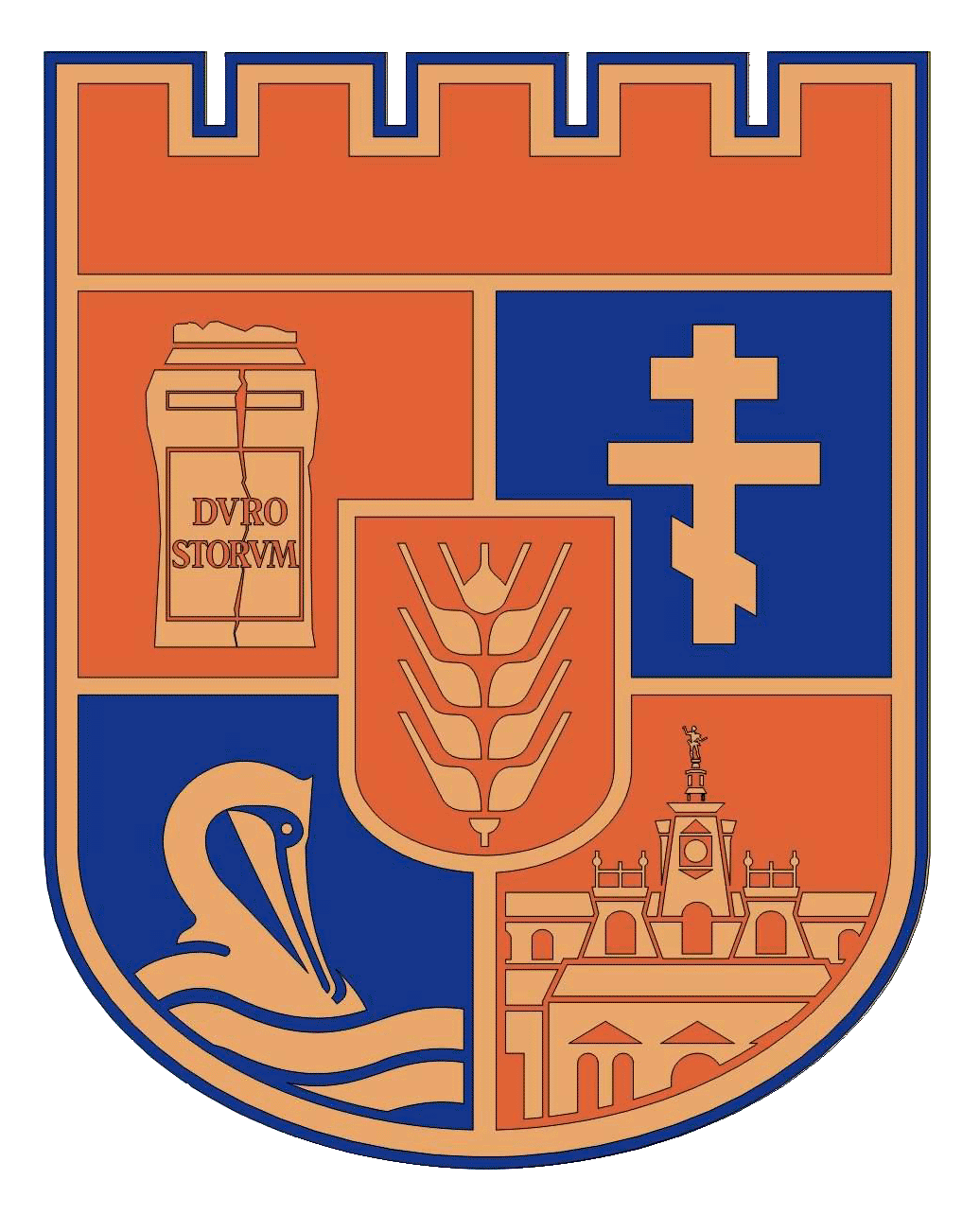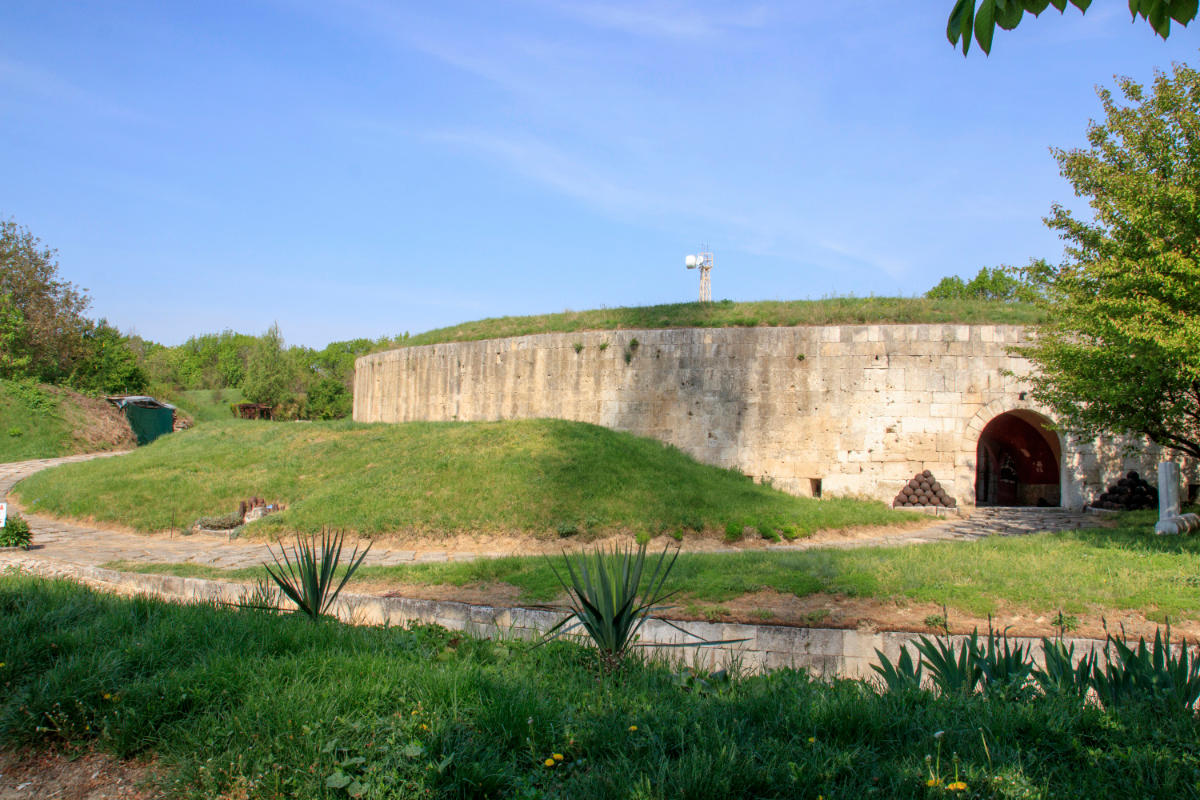Mezhidi Tabia fortress
Category CastleLOCATION
Medjidi Tabia is located in the Silistra region, south of the town of Silistra on the way to the town of Shumen, turning left before the village of Kalipetrovo, next to the television tower. It is 429 km away from Sofia. The town is 429 km away from the capital Sofia. There is a bus three times a day leaving from the Sofia Central Bus Station to Silistra, as well as a train three times a day from the Sofia Central Railway Station.
DESCRIPTION
Medjidi Tabia is a stone fortress. It is the only fully preserved Turkish fortress as interior and exterior on Bulgarian territory, part of the Ottoman fortification system used during the Crimean War (1853 - 1856) and the Russo-Turkish War of 1877-1878. It has the shape of a hexagon and reaches to 8 meters high. The ditch adjacent to it has served as an obstacle and disguise.[1]
HISTORY
The fortress was built in the 1841-1853 period with the forced labor of 300 Bulgarians. The idea of the construction belongs to the German military engineer Helmut von Moltke (1800-1891), who visited the town in 1837. The main masters were from Dryanovo and the stonemen were from the Silistra region. The construction of the fortress attracted the attention of Sultan Abdul Medjid, who arrived in 1847 to inspect the construction works and then gave it his name. Its main role was to provide additional protection to the Danube cities as the river served as the northern border of the Ottoman Empire. The fortress was completed during the reign of the regional governor Said Pasha on the eve of the Crimean War. It played an important role during the Crimean War for the protection of Silistra from enemy attacks.
The Russian king Alexander is considered to be the patron of the twelve million Christianity under Ottoman domination and wants to enter into history as the liberator of Jerusalem. However, it does not appeal to the old crusading nation France, which has not yet recovered from the Russian trauma of 1812.
In order to break the expansion of Russia and protect its own interests in the Orient, England, in particular, relies on Turkish nation. It was good for the country to give some help to the Ottoman Empire instead of letting the king conquer the Balkans and reach the Mediterranean Sea.
So, the Western powers allied themselves with the Ottomans against "Asian despotism". First, in the summer of 1853, the Russians conquered the Danubian Principalities of Wallachia and Moldova. Turks relying on help from Western forces would provoke the Russian attack on the Turkish port of Sinop. In the ensuing maritime battle, the Turkish navy was defeated. Then England and France declared war on Russia. The Crimea Peninsula (today Autonomous Republic of Crimea) became the main theater of the war because there was the most important Russian port in the Black Sea - Sevastopol.
The Russian writer Lev Nikolaevich Tolstoy (1828 - 1910) participated in the fighting around the fortress. The facility was actively used in the Russo-Turkish war of 1877-1878 , which was the tenth in the series of Russian-Turkish wars and an important part of the exacerbation and resolution of the Eastern Question in 1875-1878. The reason for this war was the Uprising in Bosnia and Herzegovina (1875), the April Uprising in Bulgaria (1876) and the Serbian-Turkish War (1876). Participants are the Ottoman Empire on one side and Russia, Bulgaria, Romania, Serbia and Montenegro on the other.[2]
The war is perceived and called Liberational because it leads to the liberation of part of the Bulgarians from Ottoman domination and the creation of the Third Bulgarian State. Similarly, it is treated in Romania, Serbia and Montenegro, which received independence after it. Bulgarians.
The fortress wall has the shape of a hexagon and reaches a height of up to 8m. Next to it there is a ditch that served both as an obstacle and a disguise. The fortress was built during the 1841-1853 period with the forced labor of 300 Bulgarians. The main masters of the fortress were from Dryanovo and the stonemasons were from the region of Silistra. During the construction of the fortress they built the first monolithic renaissance temples in Silistra - in Alfatar (1846) and Kalipetrovo (1847).
SITE SIGNIFICANCE
Medjid Tabia is a stone fortress - fort, outpost of the Silistra fortress.
VISITOR INFORMATION
The fortress is hard to reach for people with disabilities. The maximum number of visitors is 30 (children) and 40 (adults). Parking at the entrance of the fortress is allowed for cars and buses. There is a guide. Talks are delivered in Turkish, Romanian, Russian, English and Bulgarian. Photographing is allowed everywhere, including in the museum exhibitions.
The facility is open all year round, with no breaks every day from 8:00 to 18:00.
Entrance fees:
Adults - 2 BGN
Students - 1 BGN
Guided tours in Bulgarian - 5 BGN
Guided tours in Russian, English and Romanian - 10 BGN
OTHER INFORMATION
The site has an exhibition of weapons from different ages.
SITE CLASSIFICATION
Аrchaeological site
[1] Opoznai.bg <https://opoznai.bg/view/krepost-medjidi-tabiia-silistra> 24.04.2018
[2] Wikipedia.org <https://bg.wikipedia.org/wiki/%D0%A0%D1%83%D1%81%D0%BA%D0%BE-%D1%82%D1%83%D1%80%D1%81%D0%BA%D0%B0_%D0%B2%D0%BE%D0%B9%D0%BD%D0%B0_(1877_%E2%80%93_1878)> (28.04.2018)




